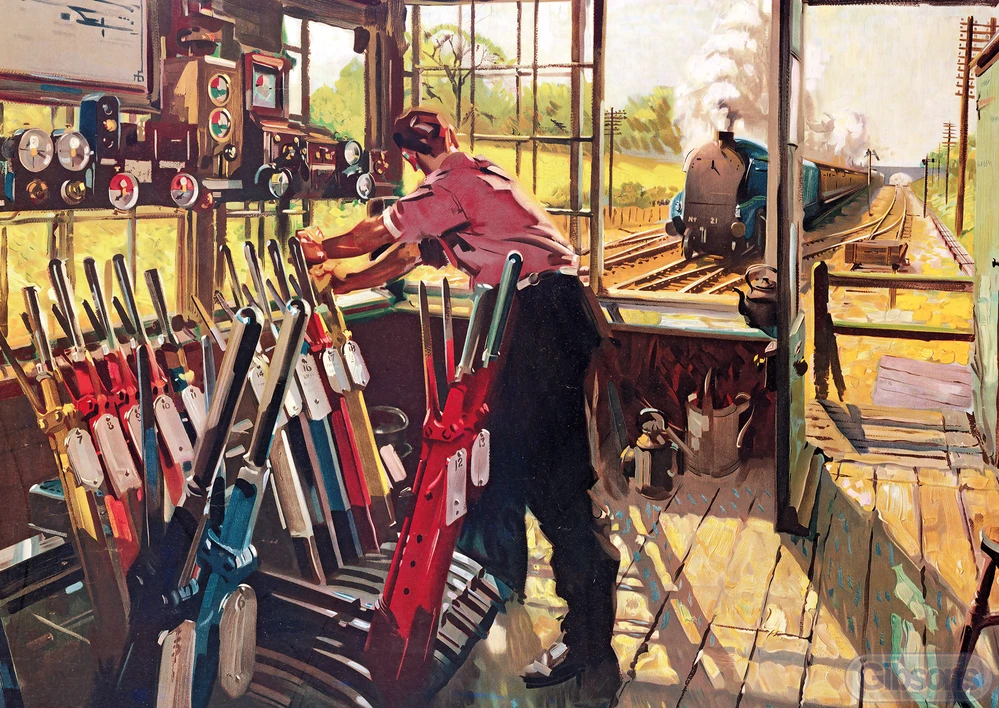On Early Shift 500 pcs Richard Macneil
Puzzle Number: G3135


Puzzle Description
Mechanical railway signalling installations rely on lever frames for their operation to interlock the signals, track locks and points to allow the safe operation of trains in the area the signals control. Usually located in the signal box, the levers are operated either by the signalman or the pointsman. The world's largest lever frame (191 levers) is thought to have been in the Spencer Street No.1 signal box in Melbourne, Australia, which was decommissioned in 2008. The largest operational lever frame, meanwhile, is located at Severn Bridge Junction in Shrewsbury, England, and it contains 180 levers, although most of them have been taken out of use.
The lever frame is located in the signal box, which can be a building at ground level or a tower, separated from or connected to an existing station building. Early lever frames were also built as ground frames next to the track, without any form of shelter and were usually operated by traincrew and not permanently staffed. Especially in England, lever frames with the pivot underneath the floor of the signal box were common (as seen on the photo on the left). This design's relatively short lever angle is a major disadvantage, as it requires more force to move the lever. Therefore, later, especially in Germany, lever frames with pivots inside the signaller's room were used, that allow for a lever angle of approximately 180°.
By the movement of individual levers (or sometimes cranks), signals, points, track locks, level crossing gates or barriers and sometimes movable bridges over waterways are operated via wires and rods. The signaller chooses the correct combination of points, facing point locks and signals to operate, which will control the movement of each train through their area of control. The lever frame contains interlocking designed to ensure that the levers cannot be operated to create a conflicting train movement. Each interlocking installation is individual and unique to the location controlled. The interlocking may be achieved mechanically or by electric lever locks, or (more usually) a combination of both.